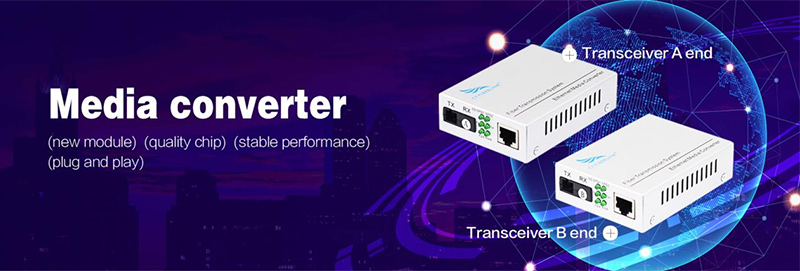[https://www.cffiberlink.com/fiber-transceiver/]
①The optical fiber transceiver can extend the Ethernet transmission distance and expand the Ethernet coverage radius.
②The optical fiber transceiver can convert between 10M, 100M or 1000M Ethernet electrical interface and optical interface.
③ The use of fiber optic transceivers to construct a network can save network investment.
④The optical fiber transceiver makes the interconnection between servers, repeaters, hubs, terminals and terminals faster.
⑤ The optical transceiver has a microprocessor and a diagnostic interface, which can provide various data link performance information.
Does the fiber optic transceiver have which one to transmit and which to receive?
When using fiber optic transceivers, many friends will encounter such questions:
1. Do fiber optic transceivers have to be used in pairs?
2. Is the optical fiber transceiver divided into one for receiving and one for sending? Or just two fiber-optic transceivers can be used as a pair?
3. If the optical fiber transceivers must be used in pairs, is a pair of the same brand and model? Or can any brand be used in combination?
Answer: Optical fiber transceivers are generally used in pairs as photoelectric conversion devices, but it is also normal to use optical fiber transceivers with fiber optic switches, and fiber transceivers with SFP transceivers. In principle, as long as the optical transmission wavelength is the same, The signal encapsulation format is the same and all supports a certain protocol to realize optical fiber communication.
Generally, single-mode dual-fiber (two fibers are required for normal communication) transceivers are not divided into transmitter and receiver, as long as they appear in pairs, they can be used.
Only a single-fiber transceiver (one fiber is required for normal communication) will have a transmitter and a receiver.
Whether it is a dual-fiber transceiver or a single-fiber transceiver to be used in pairs, different brands are compatible with each other. But the speed, wavelength, and mode need to be the same.
That is to say, different rates (100M and 1000M) and different wavelengths (1310nm and 1300nm) cannot communicate with each other. In addition, even a single-fiber transceiver of the same brand forms a pair with dual-fiber and dual-fiber. cannot communicate with each other.
Post time: Oct-27-2022


